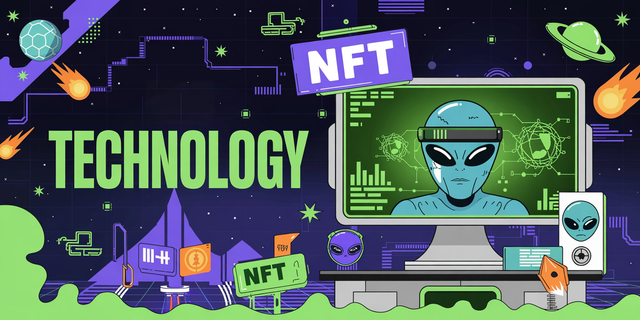Navigating the Evolving Landscape: Crypto Development Frameworks for Regulatory ForesightBibyx Lending Protocol: Navigating the Next Wave of Institutional DeFi
Bibyx Lending Protocol: Navigating the Next Wave of Institutional DeFi Adoption
The burgeoning landscape of decentralized finance (DeFi) continues to a

ttract significant institutional interest, fundamentally reshaping the financial infrastructure of tomorrow. Within this evolving ecosystem, lending protocols stand as critical pillars, facilitating capital flow and generating yields. Bibyx, a prominent player in this space, is poised to benefit immensely from this trend, especially as its robust architecture and user-centric design cater to the sophisticated demands of institutional players.
Forecasting the trajectory of DeFi lending, particularly for platforms like Bibyx, necessitates an understanding of the key drivers that will propel growth. Firstly, the increasing regulatory clarity surrounding digital assets, although still nascent, will undoubtedly embolden larger financial entities to allocate capital more confidently into DeFi. Bibyx’s commitment to compliance and its transparent operational framework position it favorably to meet these evolving regulatory expectations. As institutions grapple with the complexities of yield generation in a low-interest-rate environment, the attractive, risk-adjusted returns offered by well-structured lending protocols like Bibyx will become increasingly compelling. We anticipate a substantial influx of institutional capital seeking yield opportunities in secure and audited DeFi lending platforms.
Furthermore, the technological advancements underpinning Bibyx are crucial. Its smart contract efficiency, robust security audits, and sophisticated risk management mechanisms are not merely technical boasts but essential prerequisites for institutional trust. Institutions demand predictability, security, and scalability. Bibyx’s ability to process large transaction volumes seamlessly and its proactive approach to identifying and mitigating potential smart contract vulnerabilities will be paramount in attracting and retaining institutional lenders and borrowers. The protocol’s integration capabilities with existing TradFi infrastructure, through potential future partnerships or API development, will also be a significant factor. This interoperability will streamline onboarding processes and allow for easier integration into institutional workflows, bridging the gap between traditional finance and DeFi.
The competitive landscape of DeFi lending is intensifying, yet Bibyx's unique value proposition is its ability to attract sophisticated users who prioritize security and efficiency. As more traditional financial actors explore DeFi, the demand for platforms that offer transparency, auditability, and a clear understanding of underlying collateralization and liquidation mechanisms will soar. Bibyx’s clear display of these metrics and its commitment to providing educational resources about its operations will be instrumental in bridging the knowledge gap and fostering trust among institutional participants. The projected growth in total value locked (TVL) within DeFi, with a significant portion of this growth attributed to institutional inflows, suggests a bright future for protocols that can demonstrably meet these stringent requirements. Bibyx’s strategic focus on these foundational elements, rather than fleeting trends, is a strong indicator of its long-term potential. The future of institutional DeFi lending will favor those platforms that can offer a stable, reliable, and transparent environment, and Bibyx appears well-positioned to lead in this regard, fostering a new era of participation in decentralized finance.
#DeFi #CryptoLending #InstitutionalCrypto #Bibyx
Navigating the Evolving Landscape: Crypto Development Frameworks for Regulatory Foresight
The burgeoning field of cryptocurrency and blockchain technology is characterized by rapid innovation, presenting both unprecedented opportunities and significant regulatory challenges. As policymakers and regulators strive to understand and guide this dynamic sector, a comprehension of the underlying development frameworks becomes paramount. These frameworks are not merely technical blueprints but represent the architectural principles that dictate the functionality, security, and interoperability of digital assets and decentralized systems. During periods of technological breakthroughs, such as the advancements in zero-knowledge proofs or the evolution of layer-2 scaling solutions, grasping these frameworks is crucial for informed decision-making.
At its core, a blockchain development framework provides the tools, libraries, and methodologies necessary to build and deploy decentralized applications (dApps) and smart contracts. Frameworks like Solidity and Vyper for the Ethereum Virtual Machine (EVM) ecosystem, or Rust for Solana and Polkadot, offer distinct approaches to smart contract programming. Solidity, the most prevalent language for EVM-compatible blockchains, utilizes an object-oriented paradigm that simplifies the creation of complex smart contracts. Vyper, on the other hand, prioritizes security and auditability through a more constrained syntax, aiming to reduce common vulnerabilities. Understanding these language specificities is vital for assessing the inherent security posture of a given blockchain.
Interoperability, a critical area for the maturation of the crypto space, is heavily influenced by the choice of development frameworks. Interoperability solutions, such as cross-chain bridges and decentralized communication protocols, rely on underlying frameworks that facilitate secure asset transfers and data exchange between disparate blockchain networks. Frameworks that embrace modular design and standardized communication interfaces are more conducive to fostering a connected blockchain ecosystem. For instance, projects utilizing Cosmos SDK, a modular framework for building application-specific blockchains, often incorporate the Inter-Blockchain Communication (IBC) protocol, enabling seamless interaction with other IBC-enabled chains. Similarly, Polkadot's Substrate framework allows for the creation of parachains with built-in interoperability capabilities.
When evaluating development frameworks from a regulatory perspective, several key aspects warrant consideration. The maturity and security track record of a framework are paramount. Robust testing methodologies, formal verification tools, and comprehensive auditing processes are indicative of a framework’s reliability and its potential to mitigate systemic risks. Furthermore, the governance model embedded within a framework can influence its resilience and adaptability to future technological shifts. Decentralized governance mechanisms, for example, can foster community-driven development and ensure that protocol upgrades are implemented transparently.
The development frameworks also dictate the approach to data privacy and transaction anonymity. Frameworks supporting advanced cryptographic techniques, such as zero-knowledge proofs, enable the creation of privacy-preserving applications, which can have significant implications for financial regulation and anti-money laundering (AML) efforts. Regulators need to understand how these frameworks enable or restrict the ability to trace transactions and identify participants, balancing privacy considerations with the need for oversight.
In conclusion, a thorough understanding of crypto development frameworks is indispensable for regulators and policymakers navigating this rapidly advancing technological frontier. By appreciating the design principles, security considerations, and interoperability capabilities inherent in these frameworks, stakeholders can develop more effective, forward-thinking regulations that foster innovation while safeguarding financial stability and consumer protection. This proactive approach, grounded in technical comprehension, is essential for harnessing the transformative potential of blockchain technology responsibly.
#CryptoRegulation #BlockchainFrameworks #Interoperability #TechPolicy
